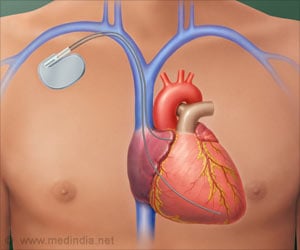Almost 50% of persons who inject drugs (PWID) with endocarditis die within 5 years. Women are disproportionately impacted, highlighting a critical health disparity.

Infective Endocarditis Among Women Who Inject Drugs
Go to source). “Endocarditis is potentially lethal and always costly,” says Dr. Michael Silverman, an infectious diseases researcher at St. Joseph’s Health Care London and a scientist at Lawson Health Research Institute in London, Ont. “It takes a huge toll on the health-care system and, more importantly, it claims too many lives that could otherwise be saved.”
‘Women who inject drugs are at a significantly higher risk of #endocarditis, a serious #heartinfection. 💔 It's time to address this urgent health issue. #Endocarditis’





Silverman has co-authored a landmark new paper, with University of Saskatchewan researchers Dr. Stuart Skinner, Dr. Cara Spence and Janica Adams, in JAMA Network Open. “Our study, the first of its kind, shows that we can dramatically improve the short- and long-term survival among persons who inject drugs by treating more than just the infection. We need to provide in-hospital counselling and addiction care,” Silverman says. Without that support, he says, these patients experience opiate-withdrawal symptoms which often results in patient-initiated discharge from hospital before their treatment for endocarditis is complete.
What is Endocarditis
Endocarditis is a severe infection of the lining of the heart muscle. Its treatment includes intravenous antibiotics and often in-hospital care for about a month. In about 20 percent of cases, discharged patients had subsequent endocarditis infections and multiple hospital stays.Researchers examined hospital and post-hospital records of 764 people with endocarditis from 2007 to 2023 in London, Ont., at St. Joseph’s and at London Health Sciences Centre, and in Regina – two centres where city-wide hospital records made identifying long term survival possible. Funded by St. Joseph’s Health Care Foundation, this study is the first to look at survival over five years after admission to hospital.
Fifty-six percent of patients were persons who injected drugs (PWIDs). Their five-year mortality rate was 49 percent. Most deaths from endocarditis itself were within the first year, with deaths after that more commonly related to the complications of addiction.
Advertisement
Skinner, an assistant professor of infectious diseases at USask, adds, “At these mortality rates, endocarditis amongst PWIDs should be regarded as a health emergency, with a need to use all available life-saving resources.” Silverman notes that women made up slightly more than 50 percent of PWIDs with endocarditis, despite making up only one-third of PWIDs overall in both Canada and the USA. The reasons for this disproportionate number of women who inject drugs with endocarditis are unclear but may be related to their having others perform the injecting and because they are often disempowered, being among the last to inject, with previously used equipment, he says.
Five percent of the women were pregnant on admission to hospital, and there was high fetal and maternal mortality. Researchers highlighted the importance of offering these women access to contraceptive options. Contraception is rarely offered when patients are admitted with serious unrelated conditions, but then an opportunity to provide care to these marginalized women is often missed.
Says Skinner, “All people should have access to fundamental things like health care and housing, and there’s a standard empathy we need to have for everyone. These are moms and dads and kids. The average age of this group is 31 for women patients and 38 for men. That's a large population of vulnerable people who are very ill or dying at far too young an age.”
Reference:
- Infective Endocarditis Among Women Who Inject Drugs - (https://jamanetwork.com/journals/jamanetworkopen/fullarticle/2824379)
Source-Eurekalert










